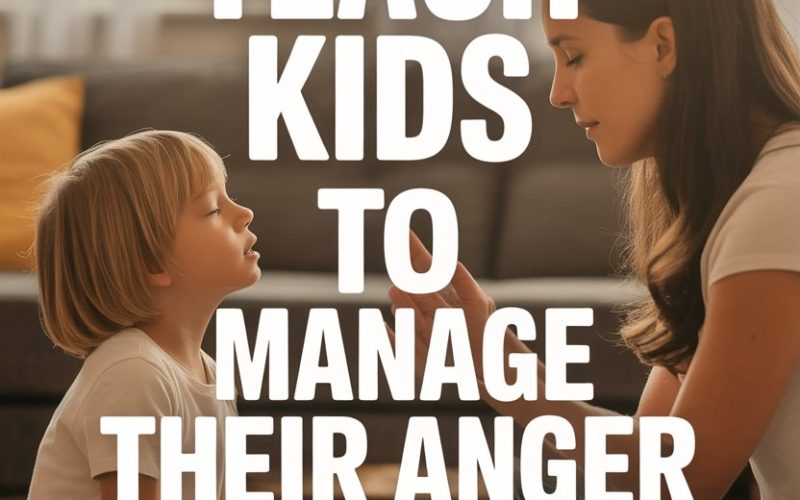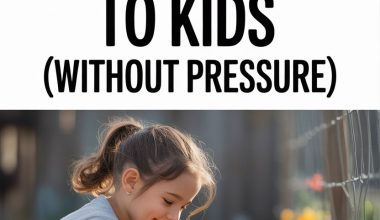Ever tried calmly asking a furious seven-year-old to “use your words,” only to be met with a banshee shriek and a flying shoe?
Welcome to the secret club of parents learning the fine art of anger management… from the splash-zone.
Kids get angry. Parents get frazzled. And everyone ends up craving chocolate.
But teaching children to manage their anger isn’t just about avoiding public meltdowns (though, let’s be honest, that’s a win).
It’s about helping them grow into emotionally healthy adults who don’t lose the plot every time Minecraft crashes.
What Anger Really Means For Kids
Anger is a big, buzzy emotion. For tiny people still learning to tie their shoelaces and, occasionally, their siblings’ hair together, anger can feel like a tidal wave they have no hope of surfing.
Experts describe anger as a secondary emotion—it often covers up feelings such as sadness, fear, or frustration. When your child is shouting about the unfairness of bath time, they’re probably not just anti-soap.
Losing your marbles is developmentally normal. Kids’ brains are a bit like a dodgy WiFi connection: the emotional bits work overtime, while the rational bits lag behind.
As adults, we fetch up with a prefrontal cortex that can help us breathe, count to ten, and not commit crimes in IKEA. Kids are still building that hardware.
Spotting The Triggers Before They Explode
You know that look on your child’s face right before the storm? Clenched fists, narrowed eyes, and a ‘don’t-even-think-about-it’ vibe.
Every child has their own set of tripwires—maybe it’s losing a game, not getting pudding, or being asked to share the iPad. Some triggers are obvious, others sneak up like a silent but deadly Lego underfoot.
Observing patterns is half the battle.
Perhaps your little one melts down after school every Tuesday (hello, overtiredness). Or maybe hunger is their enemy (snack early, snack often).
Keeping a mental note or jotting triggers in your phone can help you spot patterns, so you see the volcano coming before it erupts.
Naming The Feeling Without The Drama
Ever tried telling a raging child, “You’re angry!” and watched them escalate into a full Godzilla? Labelling emotions matters—but timing is everything.
When tempers are cooling, help your child put words to what they feel. “It seems like you’re really frustrated because you wanted that last biscuit.”
Giving a name to the storm helps shrink it down to size. By putting feelings into words, you’re teaching that emotions aren’t scary—they’re just information.
According to child development research, naming emotions actually helps kids regain control faster.
Modelling Calm (Even When You’re Seething)
Children are like parrots with a taste for drama. They absorb what they see, and if you handle stress by muttering expletives at the kettle, they’ll notice. (No judgment. We’ve all been there.)
Modelling self-control doesn’t mean being a robot. It’s about showing that anger is okay, but stomping around like a rhinoceros in slippers isn’t.
If you lose your temper, apologise. Show your child that everyone gets angry, and it’s what you do next that matters. As Dr. Laura Markham, author of Peaceful Parent, Happy Kids, puts it, “Your calm is contagious.”
Giving The Gift Of The Pause Button
Wish you had a remote for your child? You sort of do. Teaching a pause—sometimes called the “angry pause” or “cool-down”—is pure magic.
Start with simple strategies: Counting to ten, taking deep breaths, walking away, or squeezing a soft toy. It’s not about shutting down feelings, but about interrupting the urge to lash out.
For younger kids, blowing bubbles or pretending to be a dragon breathing out “fire” can help slow down runaway emotions.
Many schools teach “stop and think” routines, but these only stick when practiced at home. Make it a family affair: “We’re all learning to cool off when we feel big feelings.”
Making Space For Big Emotions
Anger doesn’t just disappear because you wish it would. Trying to banish it (“Don’t be angry!”) is about as effective as telling the weather to clear up for sports day.
Let your child know it’s okay to feel angry—it’s what they do with it that counts. Create a safe space for venting.
Maybe it’s a cozy corner with cushions (the “calm-down nook”), or just a few minutes under the table with a favourite teddy. Some families use “feelings journals” or draw pictures of what anger looks like.
Find what works for your child.
Problem Solving When The Dust Settles
Once the storm has passed (and you’ve found your missing sock), talk things over. Not while your child is still breathing fire, but when they’re ready to listen.
Ask, “What made you feel so upset? What could we do differently next time?”
Help your child brainstorm solutions. If sharing toys is a recurring Armageddon, set some ground rules together. If transitions to bed turn into WrestleMania, can you tweak the routine?
Kids are far more likely to use coping skills they’ve helped invent—this problem-solving approach actually builds confidence and resilience.
Teaching Words For Tricky Moments
“I wanted the blue cup!” Every parent has heard this battle cry—usually during a work call. Giving your child a ‘script’ for angry moments can help.
Teach phrases like, “I feel mad because…,” or “Can I have a turn when you’re done?”
Role-play can work wonders. Act out scenarios with teddies or LEGO people. Make it silly, make it frequent.
The more your child practices, the less likely they are to default to shrieking.
Using Stories and Books As Secret Weapons
Stories have a sneaky way of getting through when lectures bounce off. Children’s books about anger can help kids see that everyone flips their lid now and then—dragons, bears, even grown-ups.
Titles like When Sophie Gets Angry—Really, Really Angry… or Anh’s Anger offer gentle lessons in self-regulation.
Reading together, or chatting about how a favourite character handled big feelings, opens the door for tricky conversations. Plus, you get to snuggle.
Research confirms that shared reading supports both emotional and language development.
Physical Outlets For Fiery Feelings
Not all anger needs to be processed with words or earnest chats. Sometimes, it just needs to MOVE.
Encourage your child to run, jump, dance, or punch a pillow (not a sibling). Physical activity burns off steam and helps reset the nervous system.
If you’re all trapped indoors, try a mini dance party or a round of “shake your sillies out.” For older kids, team sports, martial arts, or yoga can channel frustration into something positive.
When To Ask For Extra Help
Most kids will test your patience and your eardrums.
Some children, though, seem stuck in a loop of anger that overshadows daily life—explosive tantrums lasting ages, aggression that’s hard to redirect, or constant frustration that leaves everyone worn out.
When anger feels bigger than you, it’s okay to call for backup. Chat with your GP, a school counsellor, or a child psychologist. Early support makes all the difference.
You’re not failing as a parent—you’re showing your child that problems deserve help, not hiding.
Cheat Sheet For The Sleep-Deprived
Let’s be honest: half the battle is remembering what on earth you’re meant to do when you’re living on caffeine and nibbled toast crusts. Here’s your quick-glance guide:
- Spot the triggers and try to head them off (snacks, sleep, routines)
- Name feelings, once everyone’s calm
- Model self-control and apologise when you lose it
- Teach the “pause”—count, breathe, walk away
- Create a safe place for venting
- Problem-solve after the meltdown
- Offer scripts for tricky moments
- Use stories and books for gentle guidance
- Get moving to burn off steam
- Reach out for help when anger feels overwhelming
Growing Together
Every parent has witnessed a child’s Oscar-worthy angry performance—sometimes in front of an actual audience at the supermarket.
But here’s the good news: managing anger is a skill, not a personality trait. One meltdown at a time, your child learns that feelings can be fierce without being feared.
You’re not raising a robot. You’re raising a human, complete with hiccups, heroics, and the occasional flying shoe.
And every time you practice these skills together, you’re building the kind of connection that weathers any storm—rain, shine, or a downpour of rage.
Now, where did that other shoe go?





